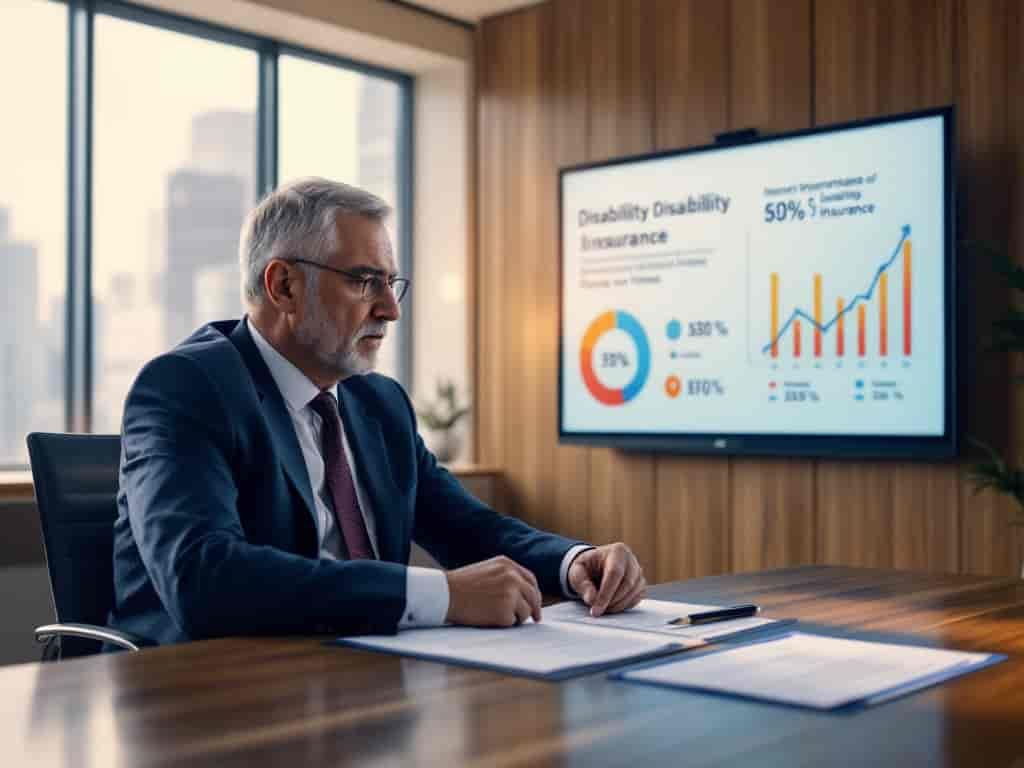Portfolio-Based Assessments: The Future of Learning?
Ellie Moore

Photo: Portfolio-Based Assessments: The Future of Learning?
Revolutionizing Education: Embracing Portfolio-Based Assessments for Enhanced Learning
The traditional education system, with its heavy reliance on standardized tests and exams, is undergoing a transformative shift as educators and institutions explore innovative ways to evaluate student learning. Enter Portfolio-Based Assessments (PBAs), a forward-thinking approach that emphasizes the demonstration of skills and knowledge through curated collections of student work. This method is not just a trend but a potential cornerstone for the future of education, offering a more holistic and authentic evaluation of student capabilities. Here's a deep dive into why Portfolio-Based Assessments could be the key to unlocking the full potential of the learning process.
Redefining Assessment: The Portfolio Approach
Understanding Portfolio-Based Assessments
Portfolio-Based Assessments represent a paradigm shift in education, moving away from the one-size-fits-all approach of traditional exams. Instead of a single, high-stakes test, PBAs involve the systematic collection of student work over time, showcasing their progress, creativity, and mastery of skills. This method allows for a more nuanced evaluation, capturing the dynamic nature of learning.
Key Components of a Portfolio-Based Assessment:
- Collection of Artifacts: Students compile a portfolio containing various pieces of work, such as essays, projects, artwork, lab reports, or even recorded performances.
- Reflection and Self-Evaluation: Learners reflect on their work, providing insights into their thought processes, challenges faced, and areas of improvement.
- Demonstration of Growth: Portfolios are designed to show the evolution of a student's skills and understanding over a specific period.
- Authenticity: PBAs aim to assess real-world skills and knowledge, making the learning process more relevant and applicable to future endeavors.
The Benefits of Embracing PBAs
- Encourages Deep Learning: By requiring students to curate and reflect on their work, PBAs promote a deeper understanding of the subject matter. This approach fosters critical thinking and encourages students to connect concepts to real-life scenarios.
- Personalized Learning Experience: Each student's portfolio is unique, allowing for personalized feedback and a more tailored educational journey. This individualization can cater to diverse learning styles and abilities.
- Develops Essential Skills: Creating and maintaining a portfolio enhances organizational, communication, and self-assessment skills, which are invaluable in academic and professional settings.
- Reduces Test Anxiety: With the focus shifting from high-pressure exams to a collection of work, PBAs can significantly reduce test-related stress, promoting a healthier learning environment.
- Provides Comprehensive Feedback: Educators can offer feedback on a broader range of skills and competencies, guiding students more effectively.
Implementing Portfolio-Based Assessments: A Practical Guide
Step-by-Step Implementation:
- Define Assessment Criteria: Educators should clearly outline the skills and competencies to be demonstrated in the portfolio, aligning them with the learning objectives.
- Set Portfolio Requirements: Decide on the types of work to be included, the frequency of submissions, and any specific guidelines for each subject or grade level.
- Introduce Portfolio Culture: Educate students about the purpose and benefits of PBAs, providing them with the necessary tools and resources to create their portfolios.
- Encourage Continuous Reflection: Regularly prompt students to reflect on their work, helping them develop metacognitive skills and a sense of ownership over their learning.
- Provide Structured Feedback: Offer timely and detailed feedback, focusing on both the content and the process of learning. This feedback loop is crucial for student improvement.
- Celebrate Diversity in Learning: Embrace the uniqueness of each portfolio, recognizing and rewarding different approaches to learning and problem-solving.
Real-World Examples of Successful PBA Implementation:
- Art and Design Courses: Students in design schools often create portfolios showcasing their artistic journey, including sketches, prototypes, and final projects. This method allows for a comprehensive evaluation of their creative process and skills development.
- Science Research Projects: In STEM fields, PBAs can include lab reports, research papers, and presentations, demonstrating not only scientific knowledge but also research skills and critical analysis.
- Language Learning: For language courses, portfolios may consist of written assignments, oral presentations, and cultural projects, providing a holistic view of language proficiency and cultural understanding.
Overcoming Challenges and Maximizing Impact
While Portfolio-Based Assessments offer a promising future for education, there are challenges to consider:
- Time and Resource Management: Implementing PBAs can be resource-intensive, requiring dedicated time for both students and teachers. Schools need to provide adequate support and training to ensure successful adoption.
- Standardization and Grading: Developing consistent criteria for evaluating diverse portfolios can be complex. Educators must collaborate to establish fair and transparent grading practices.
- Digital Integration: With the rise of online learning, digital portfolios are becoming more prevalent. Ensuring accessibility and security for digital platforms is essential.
To address these challenges, schools can:
- Provide Professional Development: Offer training sessions to familiarize teachers with PBA methodologies and best practices.
- Collaborative Grading: Encourage peer review and collaborative grading to ensure consistency and reduce the burden on individual educators.
- Utilize Digital Tools: Explore online platforms that facilitate portfolio creation, sharing, and assessment, ensuring they meet security and privacy standards.
FAQ: Addressing Common Concerns
Q: How can PBAs be fair and consistent across different teachers and schools?
A: Standardization can be achieved through clear guidelines and regular training. Collaborative grading and peer review processes can also ensure fairness and consistency.
Q: Are PBAs suitable for all subjects and grade levels?
A: Yes, PBAs can be adapted for various subjects and ages. The key is to tailor the portfolio requirements to the specific learning objectives of each course or grade.
Q: How do PBAs impact student motivation?
A: PBAs often increase student motivation by allowing them to take ownership of their learning. The process of creating a portfolio can be empowering, encouraging students to set personal goals and track their progress.
The Future of Learning: A Portfolio-Driven Journey
Portfolio-Based Assessments have the potential to revolutionize the way we evaluate and perceive learning. By focusing on the process and growth of students, PBAs offer a more authentic and engaging educational experience. This method empowers learners to become active participants in their education, fostering skills that are essential for lifelong learning.
As educators and institutions, embracing PBAs means rethinking assessment strategies and investing in the development of a more comprehensive evaluation system. It involves a shift towards a more personalized, reflective, and skill-centric approach to education. With the right implementation and support, Portfolio-Based Assessments can become a powerful tool to prepare students for the complexities of the real world.
Ready to explore this innovative approach? Start by engaging your educational community in a dialogue about the benefits of PBAs. Share this article, and let's collectively shape the future of learning, one portfolio at a time! Encourage readers to share their experiences and ideas, fostering a collaborative environment for educational advancement.
Finance & Investment
View All
August 18, 2025
Finance Made Simple for EveryoneGo beyond keywords! Learn to craft expert SEO content that ranks high, demonstrates E-E-A-T, and deeply understands user intent for real value.
Ellie Moore

August 14, 2025
Mazda Financing Deals You’ll LoveUnlocking Top Rankings: Your Guide to Expert SEO Content In today's crowded digital landscape, simply having content isn't enough. To truly stand out, attract y...
Ellie Moore

November 11, 2025
Construction Financing Rates 2025Unlocking Visibility: The Power of Expert SEO Content In today's crowded digital landscape, simply having content isn't enough. To truly stand out, attract your...
Ellie Moore

May 14, 2025
Comm Finance Explained SimplyUnlock top SEO rankings & authority with expert content. Go beyond keywords to deliver true value, build trust, and dominate your niche.
Ellie Moore

June 21, 2025
Subaru Financing Deals for Smart DriversElevate your online presence with expert SEO content. Drive organic traffic, boost rankings, and build brand authority through quality and value.
Ellie Moore

November 28, 2025
Small Business Financing Options 2025Boost rankings & traffic with expert SEO content. Build authority, trust, and align with Google's E-E-A-T. Deliver unparalleled value beyond keywords.
Ellie Moore
Insurance
View AllProtect your paycheck with disability insurance. Learn why income protection is a must-have for financial security.
Ellie Moore
Learn how self-insured companies manage risks, reduce costs, and create customized insurance solutions for employees.
Ellie Moore
Overpaying for car insurance? Discover top-rated solutions for optimal coverage & value. Protect your finances with our comprehensive guide.
Ellie Moore
Explore Nationwide Pet Insurance: plans, costs, coverage, claims, waiting periods, and market trends. Your ultimate guide to protecting your beloved pet.
Ellie Moore
Secure optimal car insurance! Our guide helps policyholders & risk managers find top providers, maximize value, protect assets, and avoid overpaying.
Ellie Moore
Navigate your Allstate car insurance quote with ease. Discover optimal coverage, understand rates, and maximize savings for peace of mind.
Ellie Moore
Education
View AllUnderstand dyslexia and discover effective ways to support dyslexic students in the classroom. Learn proven strategies to improve learning outcomes.
Read MoreSocial skills training is key for kids with autism. Learn practical strategies to improve social interaction and communication in children with ASD.
Read MoreIs a college degree still worth it? Dive into a detailed analysis of the ROI on higher education, including costs, benefits, and future prospects.
Read MoreSudbury schools embrace radical self-direction in learning. Learn how they empower students to take full control of their education journey.
Read MoreShould smartphones be allowed in classrooms? Explore the pros and cons of using smartphones in education and their impact on learning.
Read MoreTeacher burnout is on the rise. Learn about its causes, consequences, and practical solutions to support educators and improve well-being.
Read MorePopular Post 🔥
View All
1
2
3
4
5
6
7
8
9
10
Health






Automotive
View All
February 1, 2025
Hybrid vs. Electric Cars: Which Should You Buy?
Comparing hybrid and electric cars? See which is better for your needs. Find out which vehicle offers the best value, efficiency, and performance.

September 1, 2025
Understanding An Automotive AC Diagram
Unlock your car's AC secrets! Learn to read automotive AC diagrams, diagnose issues, and troubleshoot problems. Stay cool and confident on the road.

August 20, 2025
Bills Automotive Affordable Local Car Care
Bills Automotive offers affordable, reliable local car care. Break the myth that quality service is expensive & save on auto maintenance.

July 16, 2025
Where To Find Automotive Technician Jobs Now
Passionate about cars? Discover the booming demand for automotive technician jobs. Explore diverse roles and a promising future in auto tech!

July 22, 2025
All Things Automotive To Keep Your Car Running
Maximize your car's life & save money! Learn essential maintenance tips for optimal performance, safety, and longevity. Keep your vehicle running smoothly.

August 24, 2025
Hayes Automotive Top Repairs And Diagnostics
Demystify car troubles! Discover expert diagnostics & repairs for common vehicle issues, ensuring peace of mind & superior automotive care.

















